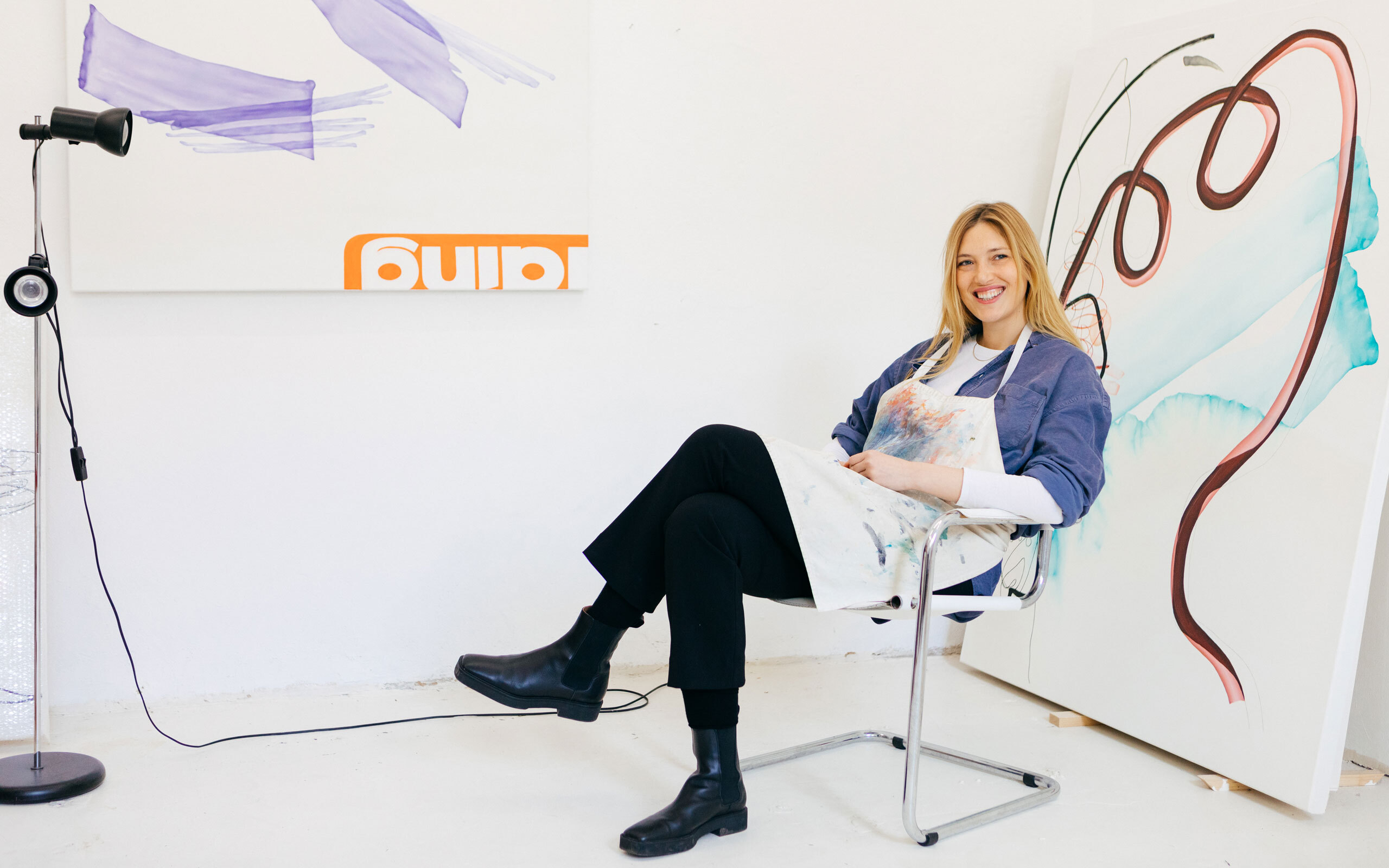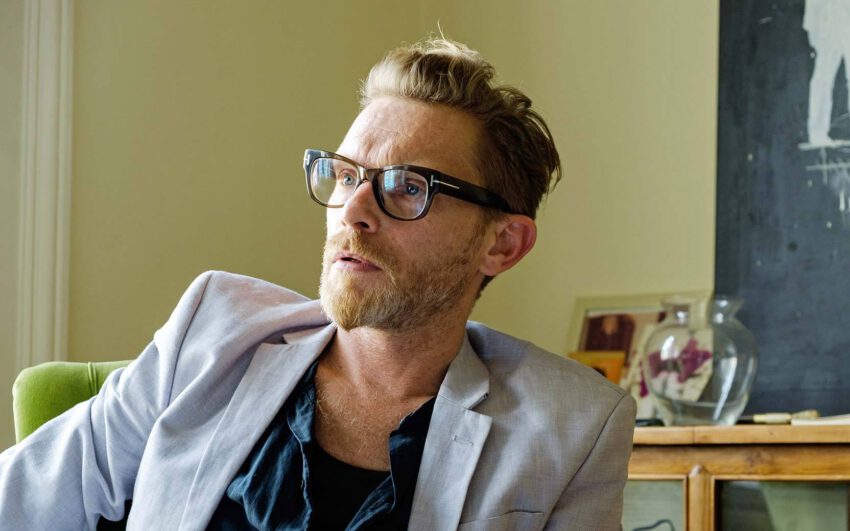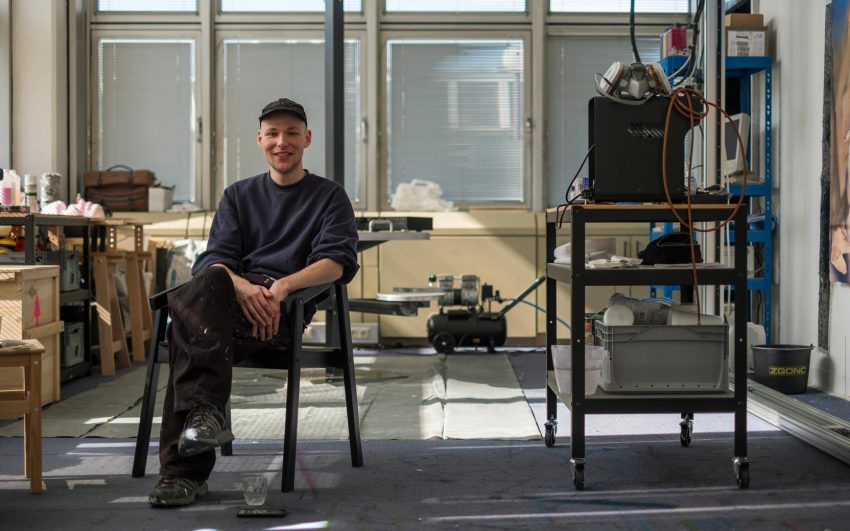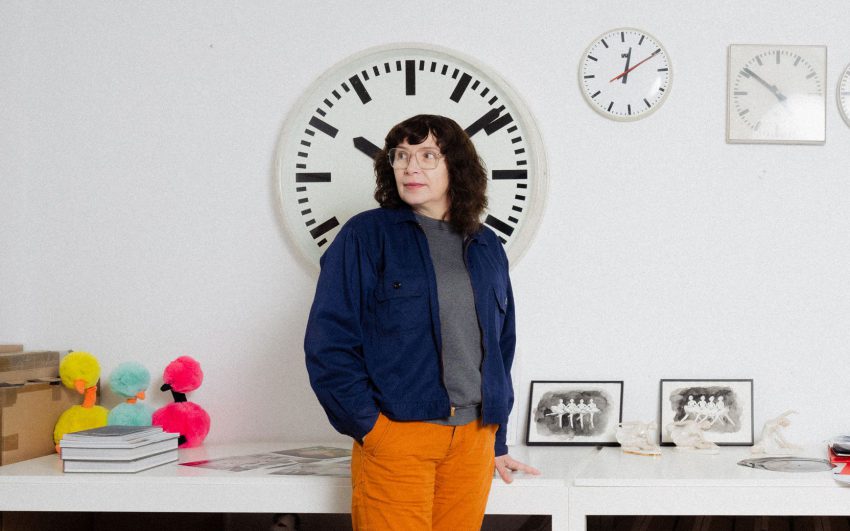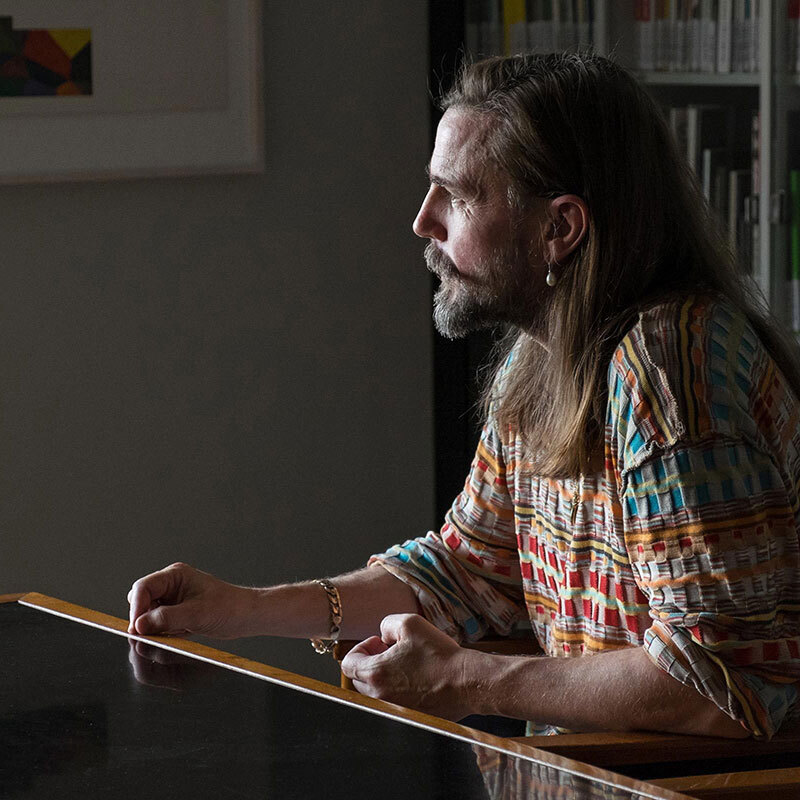For her “Scribbles” Charlotte Klobassa collects sheets from the scratch pads provided by stationery stores on which customers have tried out pens and other writing implements. These works with test scribbles of unknown authorship show an impulsive and unconscious composition that she rearranges and scales up to large-format canvas.
Charlotte, you attended art school in Vienna. How did you come to art? Were you already moved by art when you were young?
Yes, absolutely. I should say that I come from a family where constant interaction with art was the norm. My grandfather was a painter, my grandmother a sculptor. My father, too, studied sculpture. Everyone was always doing something creative. We are an art-loving family. My grandpa had his studio at his house, and when we went there for lunch on Sundays as children, we could experience what it means being artists. His name was Erwin Klobassa. He was not terribly famous and in addition to painting, he also worked as a restorer. When I was a child, he only painted. When my grandparents took naps, I would sneak into his studio with my sister and cousin and draw. My parents also worked at home in their professions. My mother is a costume designer and stylist and my father is a conservator. I was always exposed to art in my parents’ home as well. My mother worked for the theater and for film productions. The actors came in and out of our house as did the seamstresses. That’s why I initially wanted to do something with fashion. At the age of fourteen I went to a fashion school and then studied fashion design at the “Applied” in Vienna – for three years, until I no longer felt like it. I preferred to study painting for a variety of reasons.
Can you give reasons? You have also done something in fashion?
My great love of materials and my passion for textiles are what is left of it. I like to work creatively with materials, to transfer the haptic into my art. From time to time, I still make textile objects. And in painting, too, that’s one thing I like: playing with surfaces. Basically, it’s like sculpture.
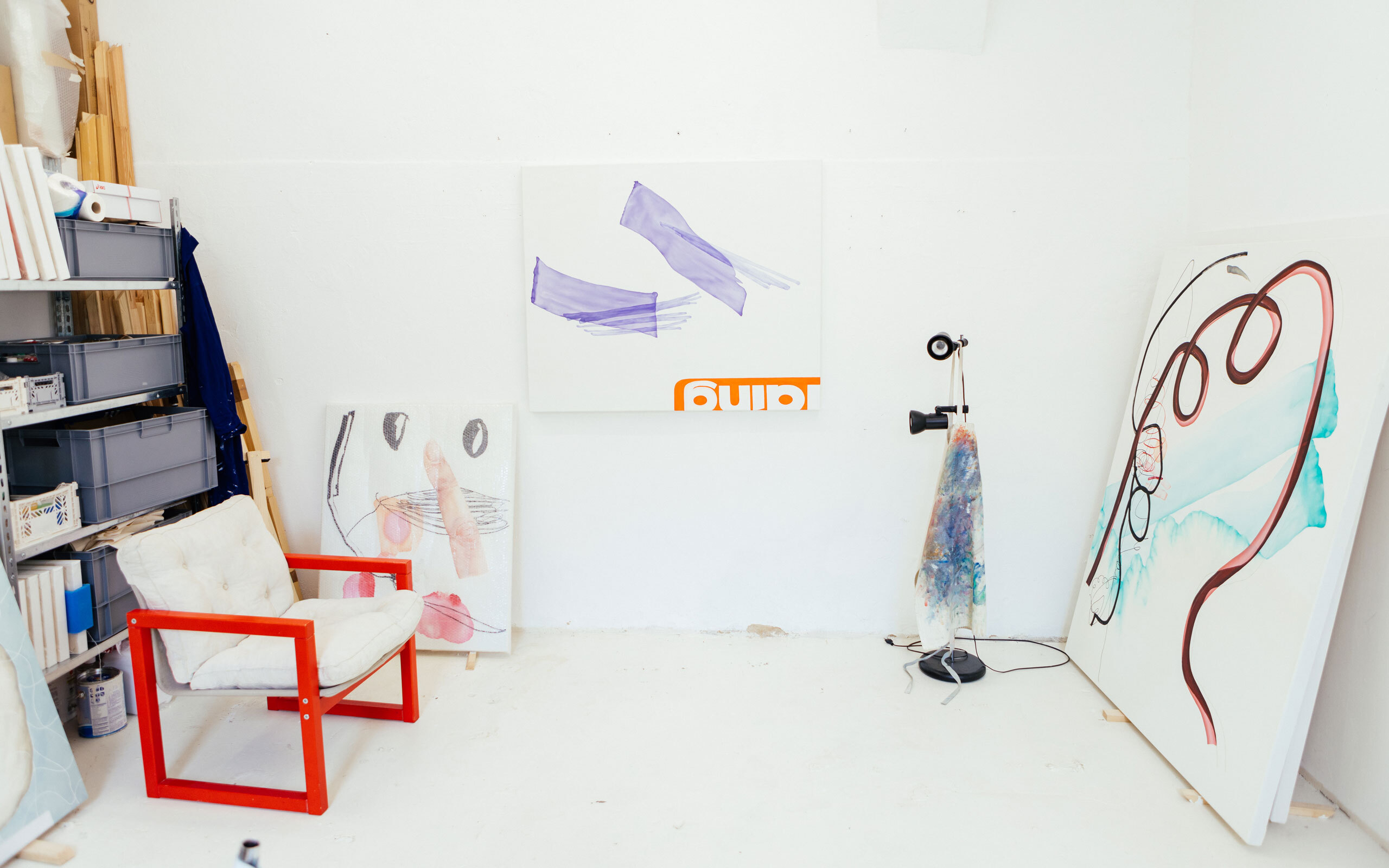
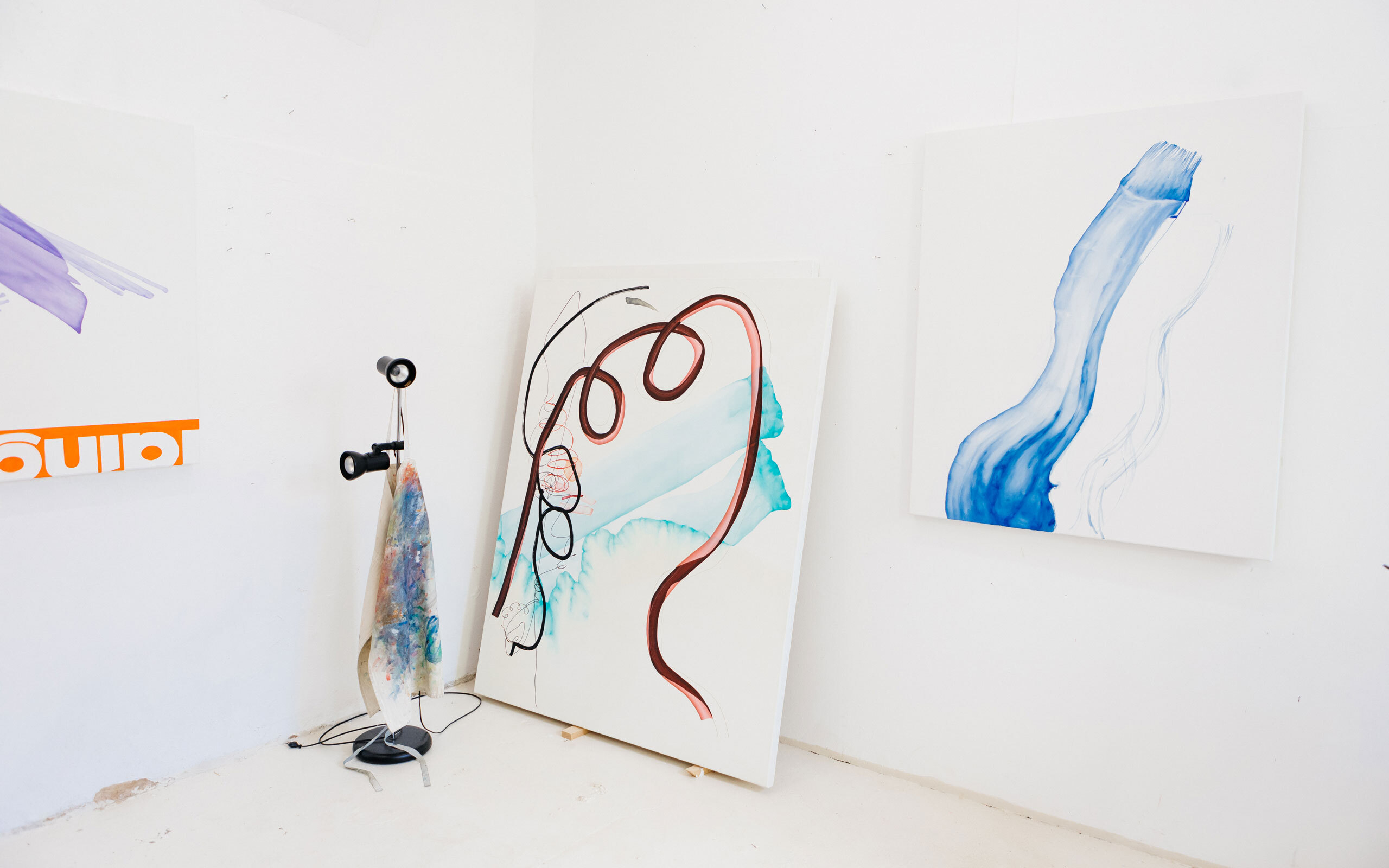
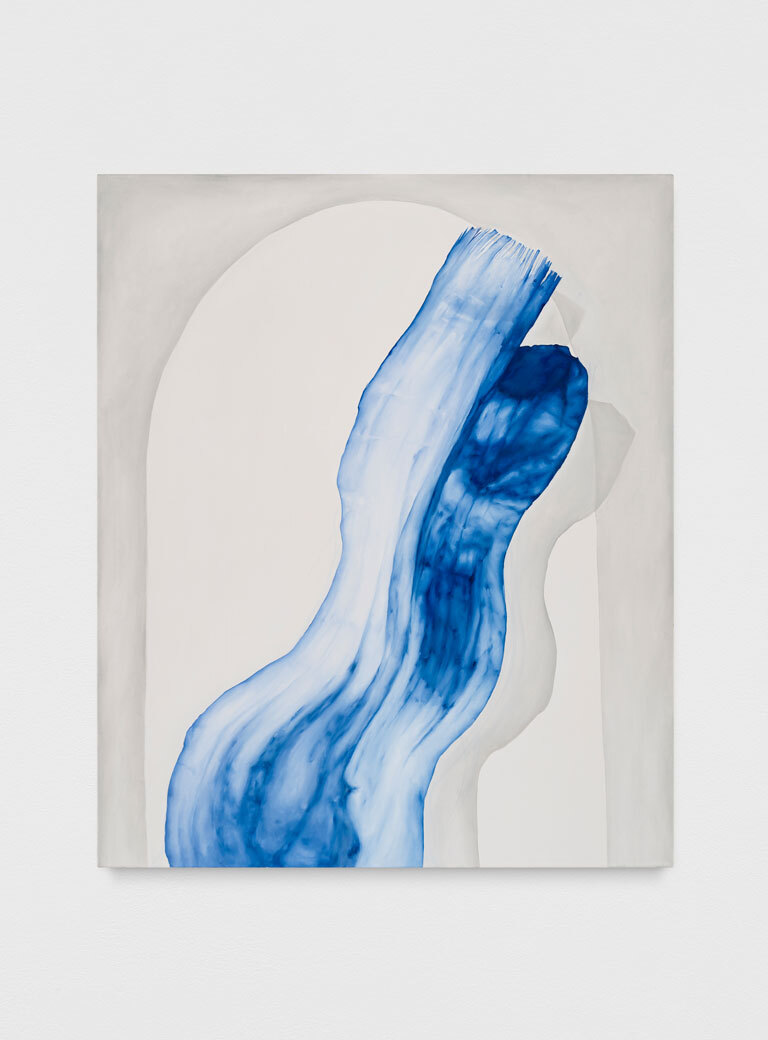
wavy, 120 x 100 cm, oil on canvas, 2021, Photo: Trevor Good
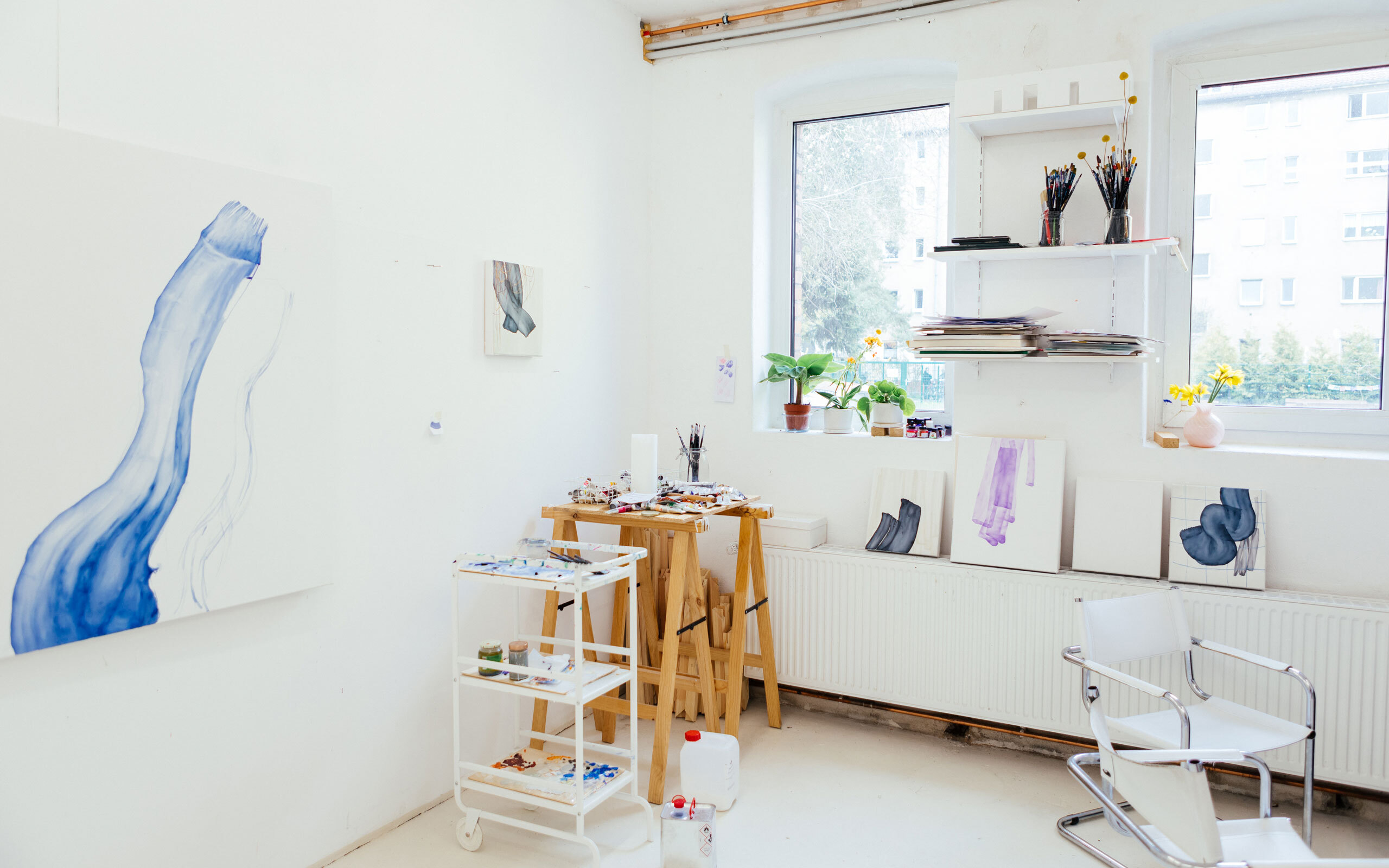
And what do you like more about painting?
What I like about painting is that it is something that lasts. It has permanence and sustainability compared to fashion. Even while still working on something relating to fashion, I often don’t even want to see my design anymore. It’s a seasonal business, and I began to dislike that more and more. Everything is very timed. You have to put out a collection twice a year. And everything has to be included, pants, tops, and maybe a coat. The fashion world is very restrictive; it’s quite a conservative business. The creative process is much more omnipresent in painting. In fashion, you design very briefly at the beginning, and after that it’s mainly just about making market decisions. That’s the craft. Painting is also a craft, but it has a much more direct approach – with every color you touch, with every brushstroke, you have a completely different means of expression. In fashion, there are many processes in between that you can’t influence.
Who are your artistic role models? Are they also from within the Art Academy?
Mostly the role models, who have left a lasting impression on me, are artists who I discover at key moments through my own work when I am ready to absorb and process impressions. Francis Bacon is still such an artist for me. He works furiously waiting for chance possibilities, chance as he calls it. He paints manically until that fortuitous artistic ‘chance’ moment occurs, which means you have to work a lot and to also be focused. You have to be totally concentrated in order to paint uninhibitedly, but then to be able to take a step back at the right moment to see what you have just created, what has happened on the canvas. The next step is to respond to what you have in front of you, and not to get lost in the elation of your own gesture.
And why Francis Bacon in particular?
Bacon moved strongly between figurative and abstract painting. Even in my works, which now look abstract, the representational and the figurative play a very fundamental role. I love the feeling when you no longer know whether you created the composition yourself or whether it just came to you. In other words, whether you control the painting itself or the painting controls you. Sometimes that process of creation leads to a point that I didn’t know could be possible. Of course you hope that a painting will come up, but being surprised when it does is even better.
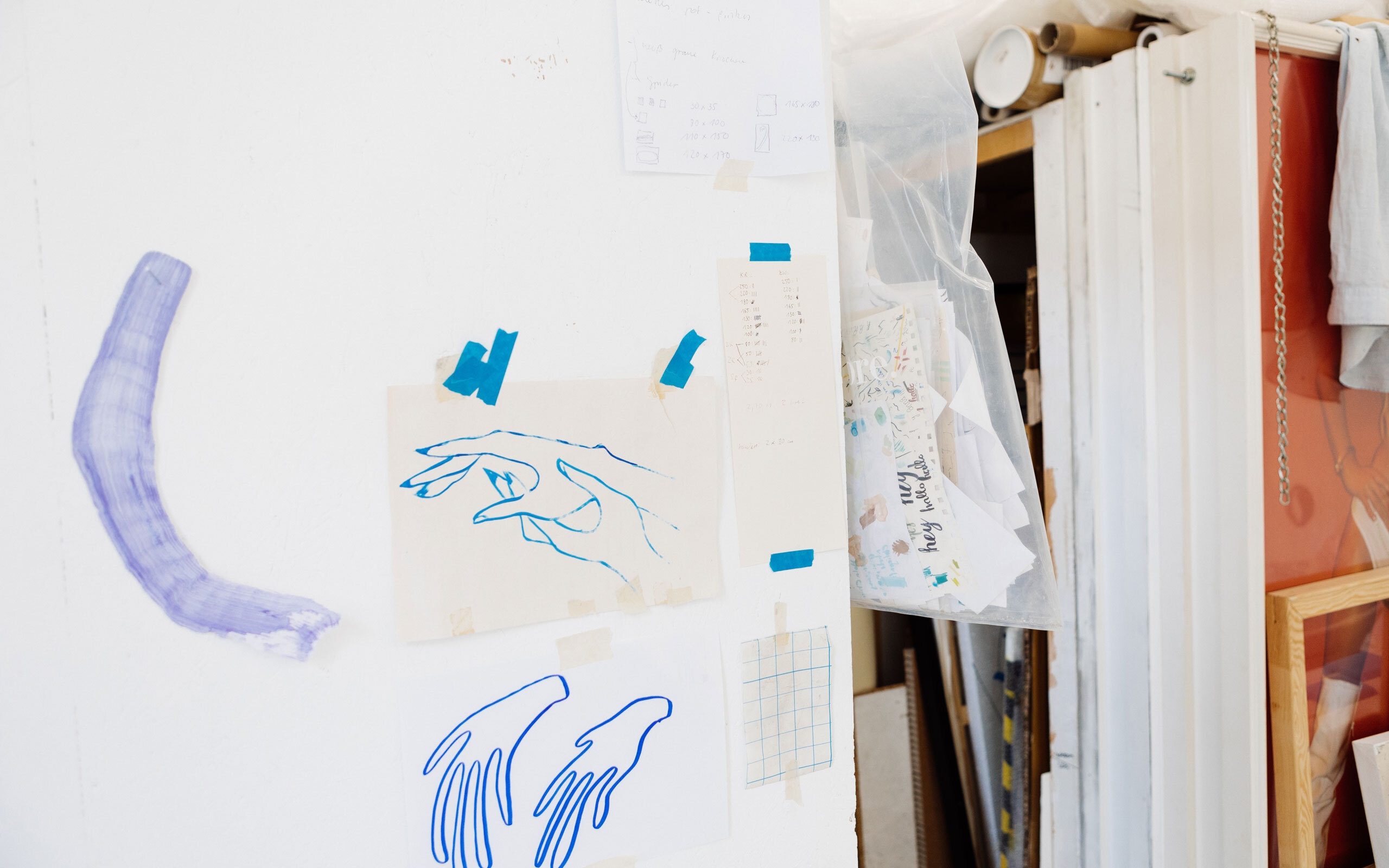
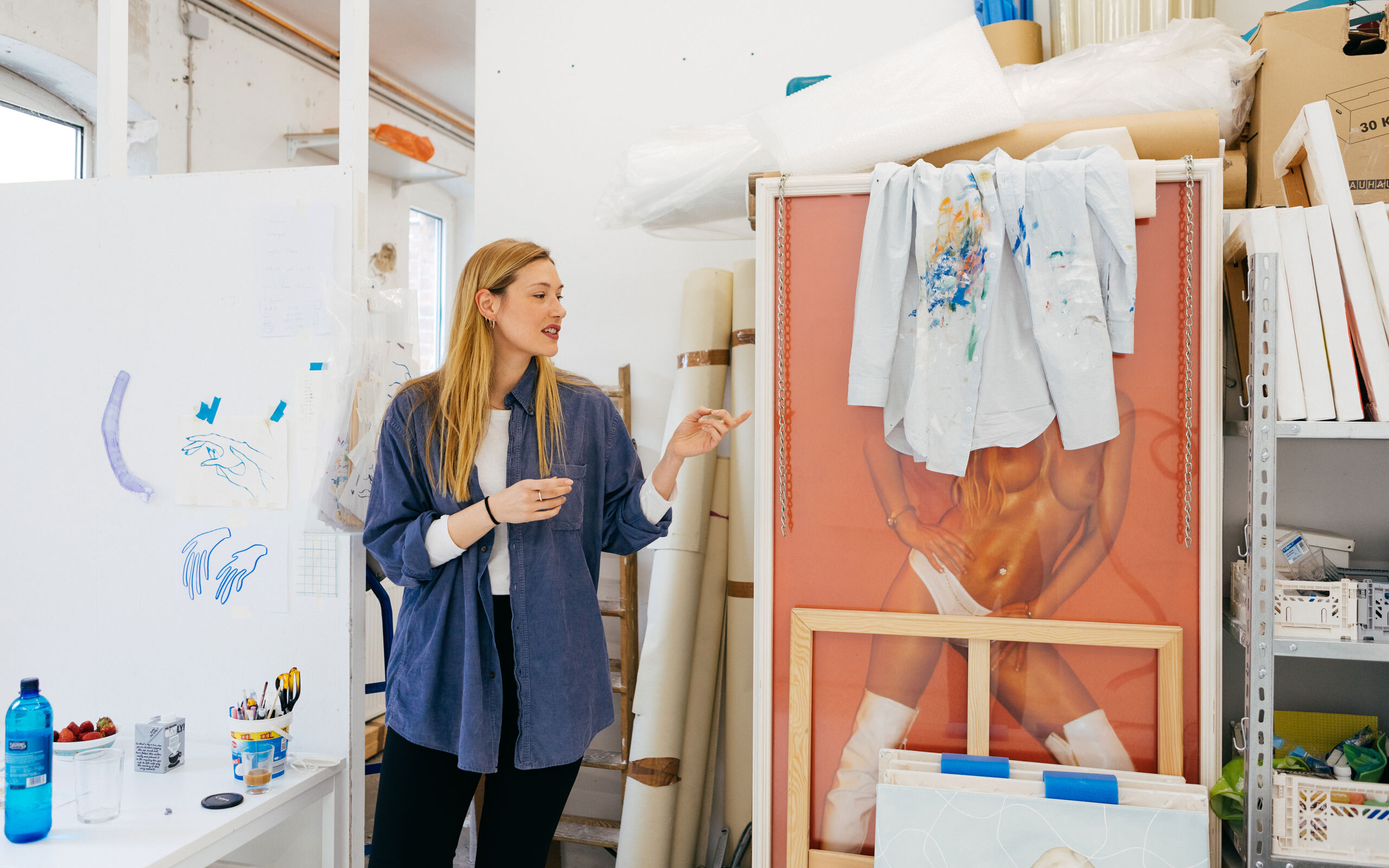
What were the most formative exhibitions for your career? Which show pushed you forward the most and gave you the most interesting impulses?
After graduation, I had my first solo exhibition at Zeller van Almsick. That was definitely super special because I had never worked for an exhibition in such an isolated and focused way before that. The Vienna Contemporary 2018 was also very special. For me it was totally absurd that I was allowed to participate with a solo stand one year after my diploma. That it then also produced such attention was a huge stroke of luck.
What works did you exhibit there?
A series of images based on the scribbled marks that people make on the small scratch pads provided by stationery stores in order for customers to try out pens and other writing implements. I showed different images from this context in an installation. All the walls and the floor had a blue Grid in the background. On the one hand, this reminded me of the checkered sheets of my templates, and on the other hand, it made the exhibition box look a bit like a swimming pool from the inside, tile-like. As an image display, I built a kind of information display, like the ones you find on hiking trails. I tried to create a place where it is as easy as possible to receive my images the way I mean them.
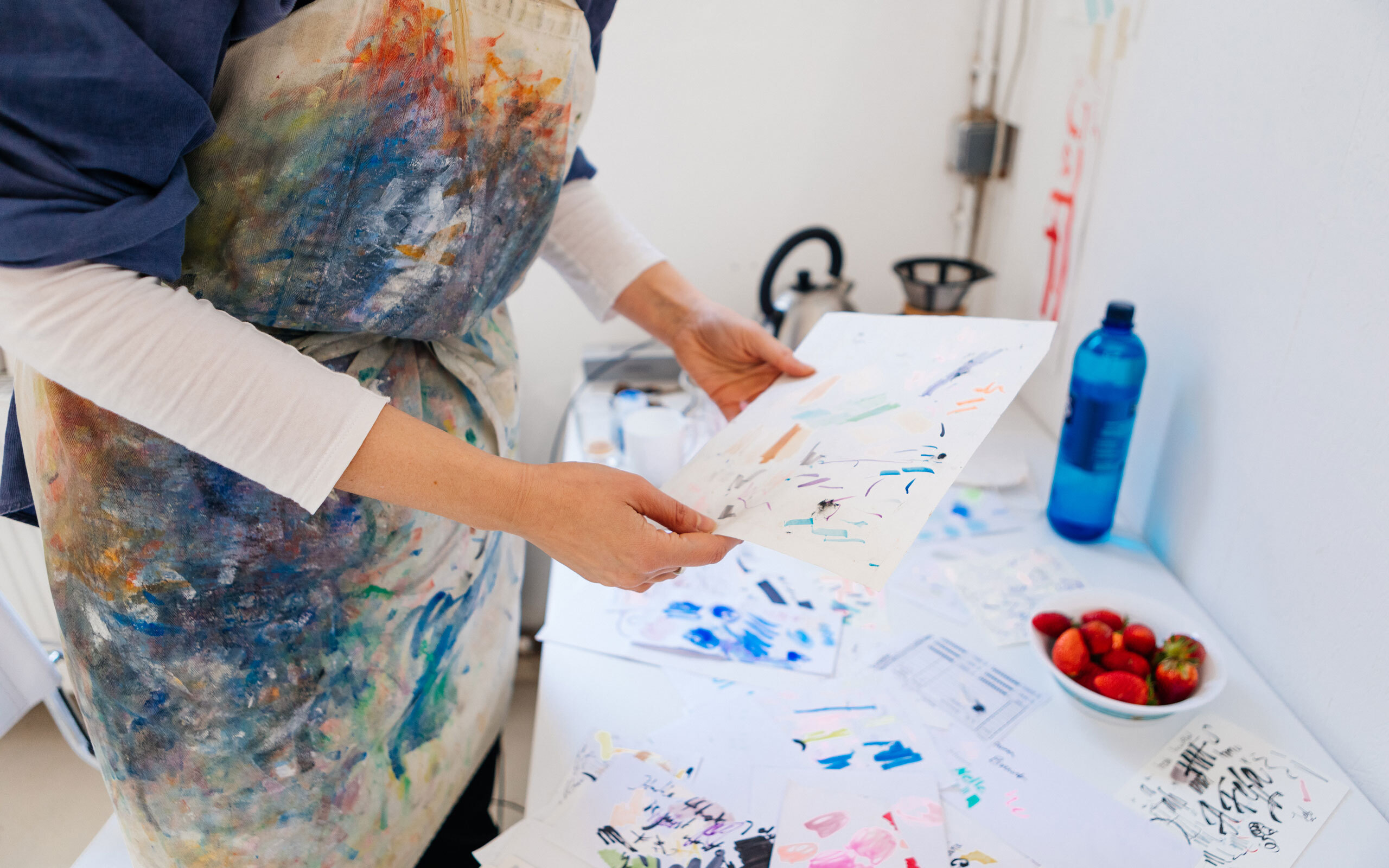
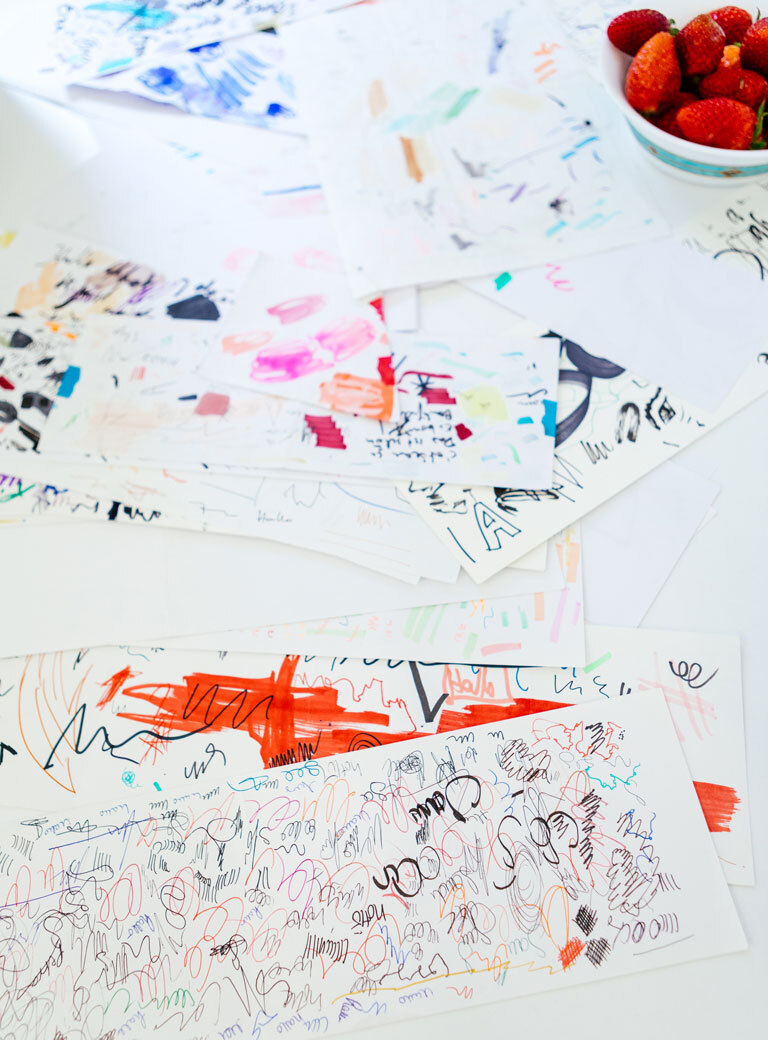
Can you explain the concept of “scribbles”, which run through your entire body of work?
Yes. I used to paint quite realistically, mostly figuratively, which limited me a lot in the way I painted. I wanted the person I was portraying to look like a person in the end, because it gets brutal really quickly if there’s anything wrong with it. Since I’m usually pretty precise and tend to spend a long time immersed in a piece of work, this wasn’t a contradiction for me, and if anything it intensified in portraiture. So I was looking for a break, but I didn’t have a good reason to just move into the abstract; it seemed too “random.” I had to build my way there first. As a result, I started painting people in water, in which the bodies dissolve through reflections and distortions. This then gradually became more unrecognizable and at some point I came up with the idea of scribbles. I collect the scribbles from stationery stores. These drawings are so honest and accessible, the people there don’t want to self-actualize and don’t think about what they’re scribbling. I find that desirable, but quite difficult to achieve in painting, because as soon as you want something, the moment of being impartial has already passed. So I extract parts of these found compositions that have a certain sweep or a gesture that I find sympathetic. I then transform these lines and forms relatively meticulously into oil painting. The abstract gesture forms the basis, but for me the forms are projection surfaces of my desires: the otherness I strive for, which I acquire through the copy. When I do replicate these strokes, they become mine, first through the intense engagement in the painting process and later through the reflection of the viewer who identifies the work with me. So I can form myself through my work and actively realize desires.
How do you arrange the “scribbles”?
I try to come to a point with my compositions. By that I mean that I want to create something new, and in doing so I consider the interactions of the individual elements, for example, like a nice evening with friends, which you plan carefully and pay close attention to who is placed where, and accordingly a social structure is created. You think about who one can place next to whom, with whom, which people would be mutually interesting in their interaction, where good dialogues might arise, all this in order to create a mood that will be specially remembered by everyone present. It’s the same with my compositions. I juxtapose certain characteristics to come to a punch line that can only be expressed in that constellation. I find it exciting to take the lines and put them together in a new way. After all, imitation and copying are rather frowned upon, although everyone knows that every artist depends on it. No one can only draw from himself.
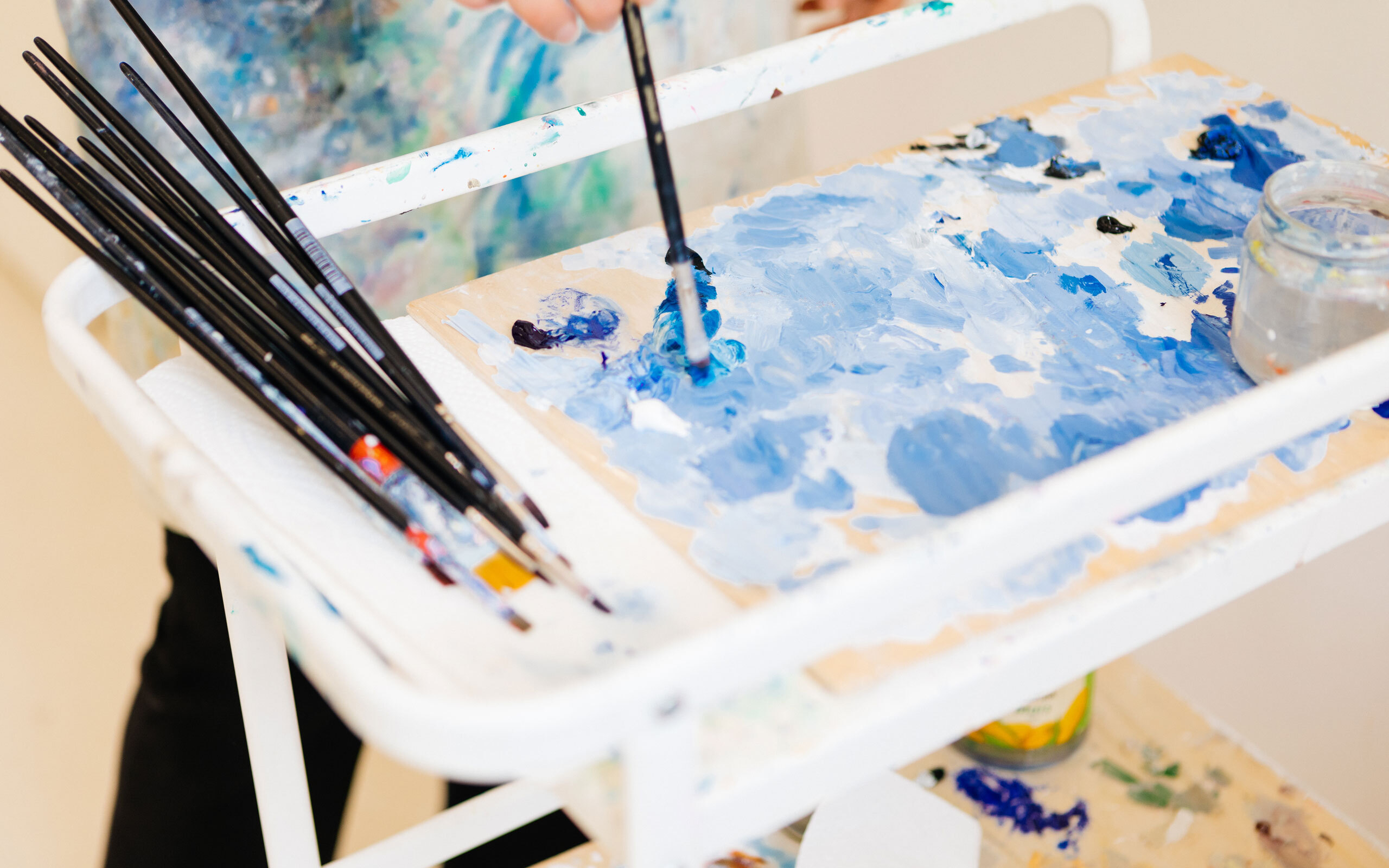
What is the typical creative process for one of these works? Do you come up with a concept intellectually or do you work more intuitively?
Usually there is something that occupies me, and I look for a suitable stroke that represents it as well as possible. Then I start to transfer it to the canvas. In the beginning I usually have a pretty precise idea of the finished picture, but in the end it always looks completely different. When painting, I have to step back from time to time and respond to what I actually see in front of me. I change, repaint, change again. To work through a concept rigidly unfortunately usually ends in disaster, the process often gives me new impetus.
What would you define for yourself as the most important work in your oeuvre that stands out, that is emblematic of your work?
Usually it’s the most recent works that you identify with the most. In painting, you are constantly changing and evolving. My interest is to progress by appropriating foreign forms, to accelerate change. I don’t want to get stuck with my own gesture, because that pool exhausts itself quickly. The gestures of other people, of people I don’t know, are endless and give me a lot of space.
How did you feel about the move from Vienna to Berlin? How did it happen that you went to Berlin as an Austrian artist?
Honestly, I still haven’t really moved, but think it will happen soon. I was talking about it with a friend the other day. Looking back, it’s almost strange how spontaneously I did it, because actually there was no rational reason to go to Berlin. I knew almost no one here, just felt like getting out a bit. After university I had to look for a new studio anyway and thought I’d go to Berlin for a few months to prepare my exhibition. I was very lucky, met great people, but also worked a lot, so I wanted to come back. I’m constantly in either Vienna or Berlin. I didn’t feel like I had to choose one city.
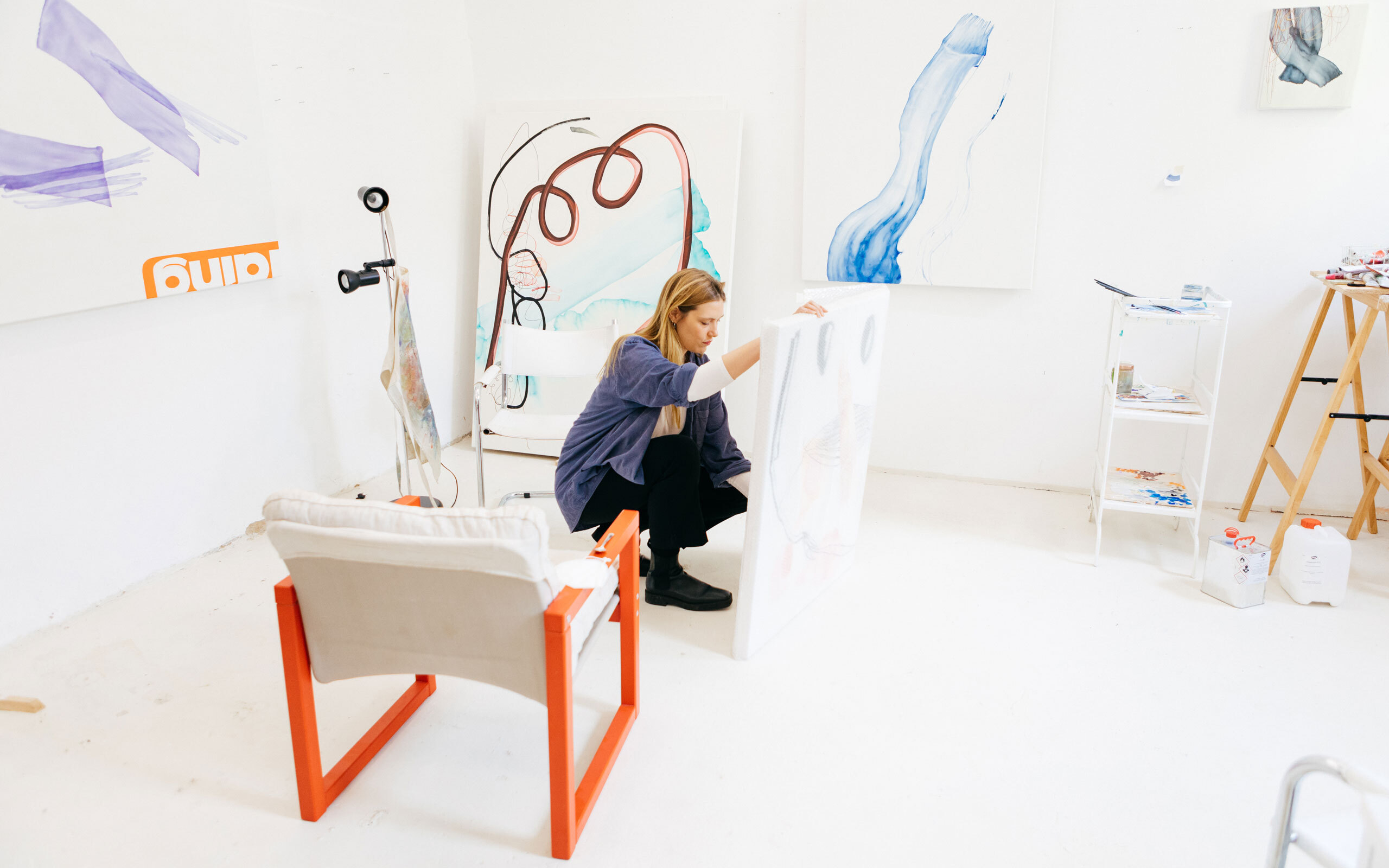
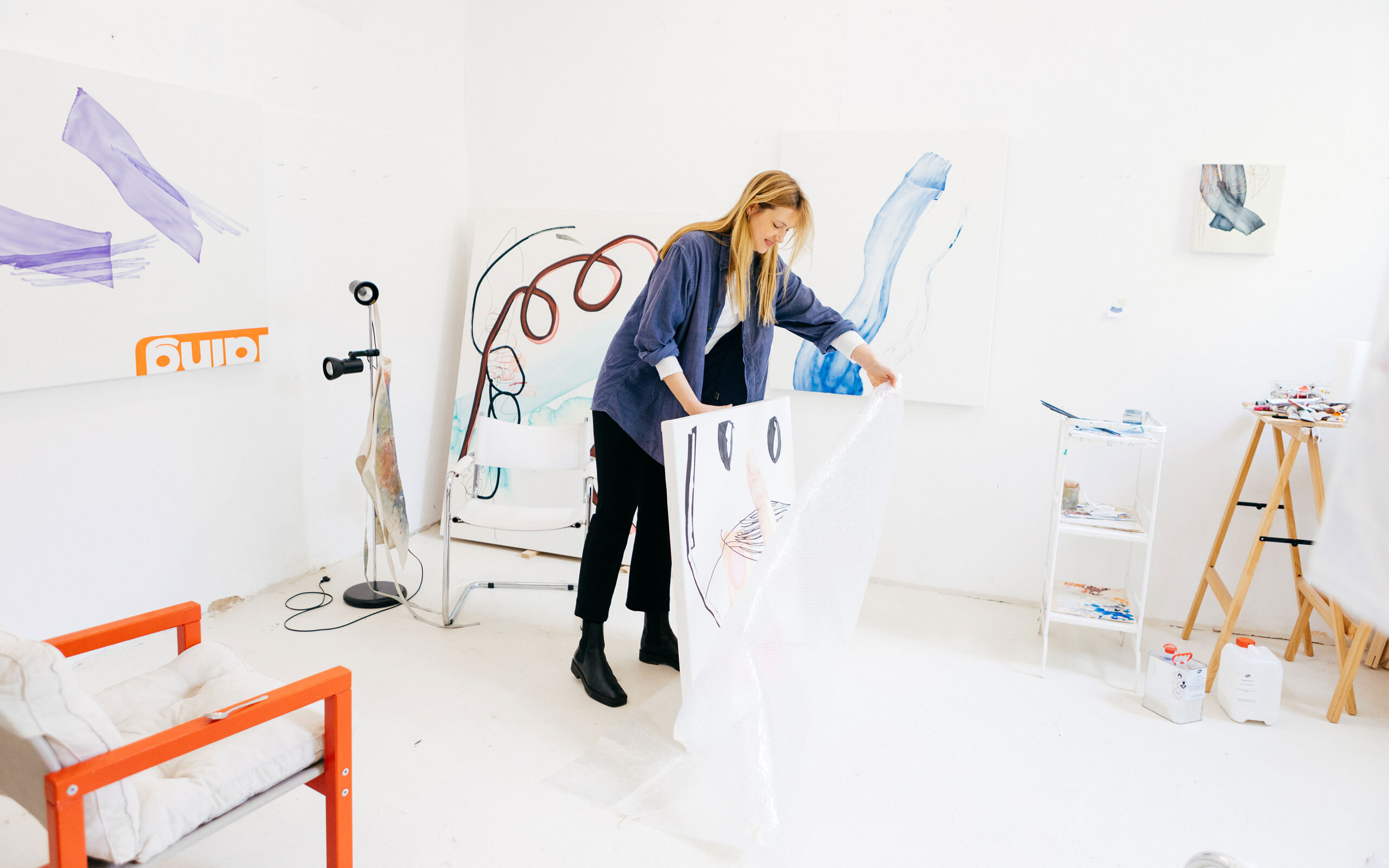
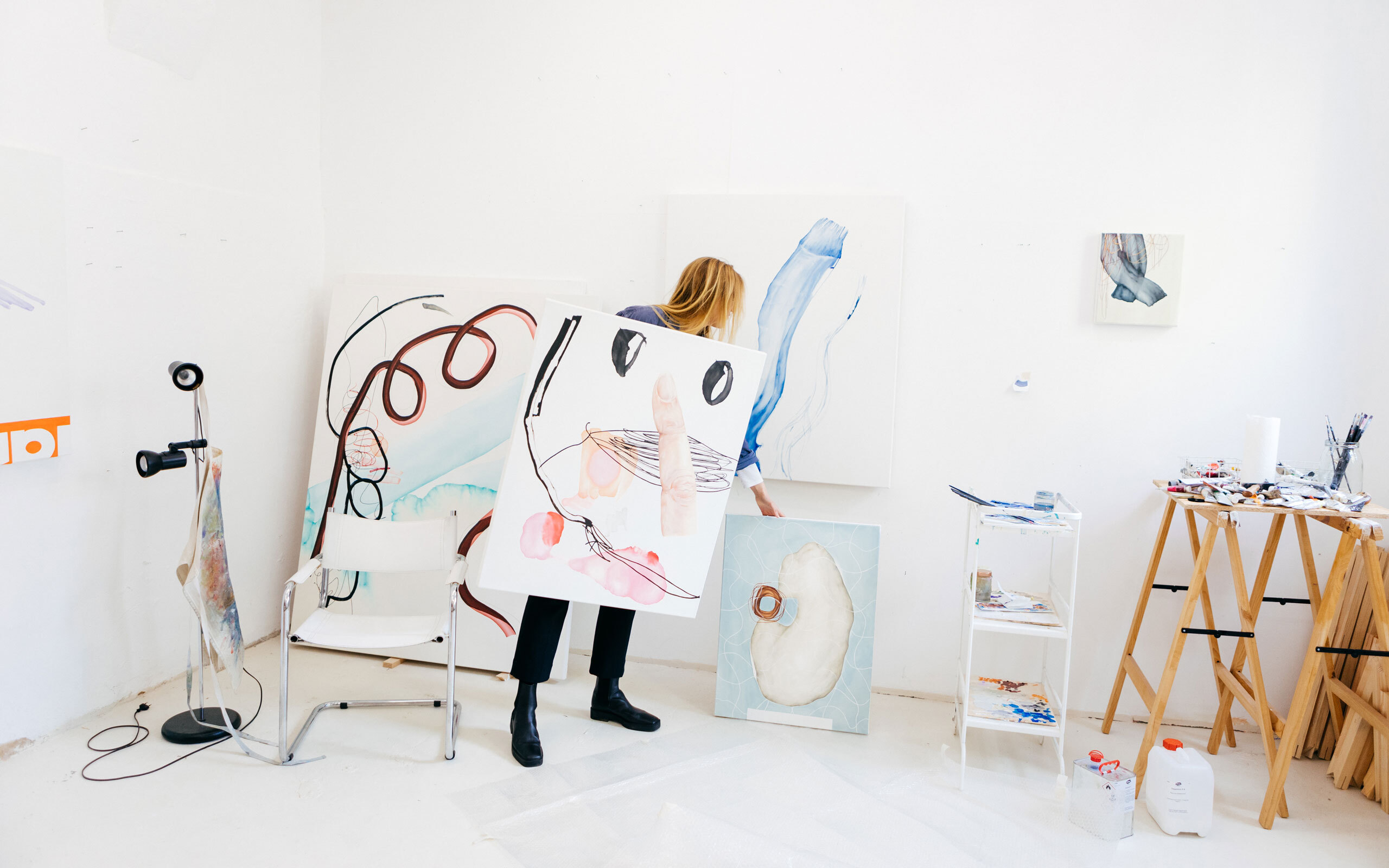
What are you working on at the moment, what are your current projects?
I’m in the mood for something big. Last year there was this strange Biedermeier revival that we all practiced, such a quiet domesticity where grand gestures had little place. It felt like trying to scream in your sleep and it was not working. Now, of course, I want the opposite, something big that pops and is fun.
How would you describe your style yourself?
Strictly speaking, most of my paintings are figurative paintings, because these strokes are placeholders for something very human, I treat them like portraits, like collections of portraits. There’s something almost fetishistic about collecting other people’s doodles for me. The definition of a fetish is ascribing more meaning to an object than it actually has. The panties from the object of desire are not just the panties but the object of desire itself. It’s a bit like that with my paintings. This gesture of someone in the form of the line is this someone, expression of a soul life and not just only the gesture itself. By acquiring this, I make this someone into me or vice versa. This unknown person becomes part of my work. That’s why my work is a little bit portrait, a little bit self-portrait, a little bit still life.
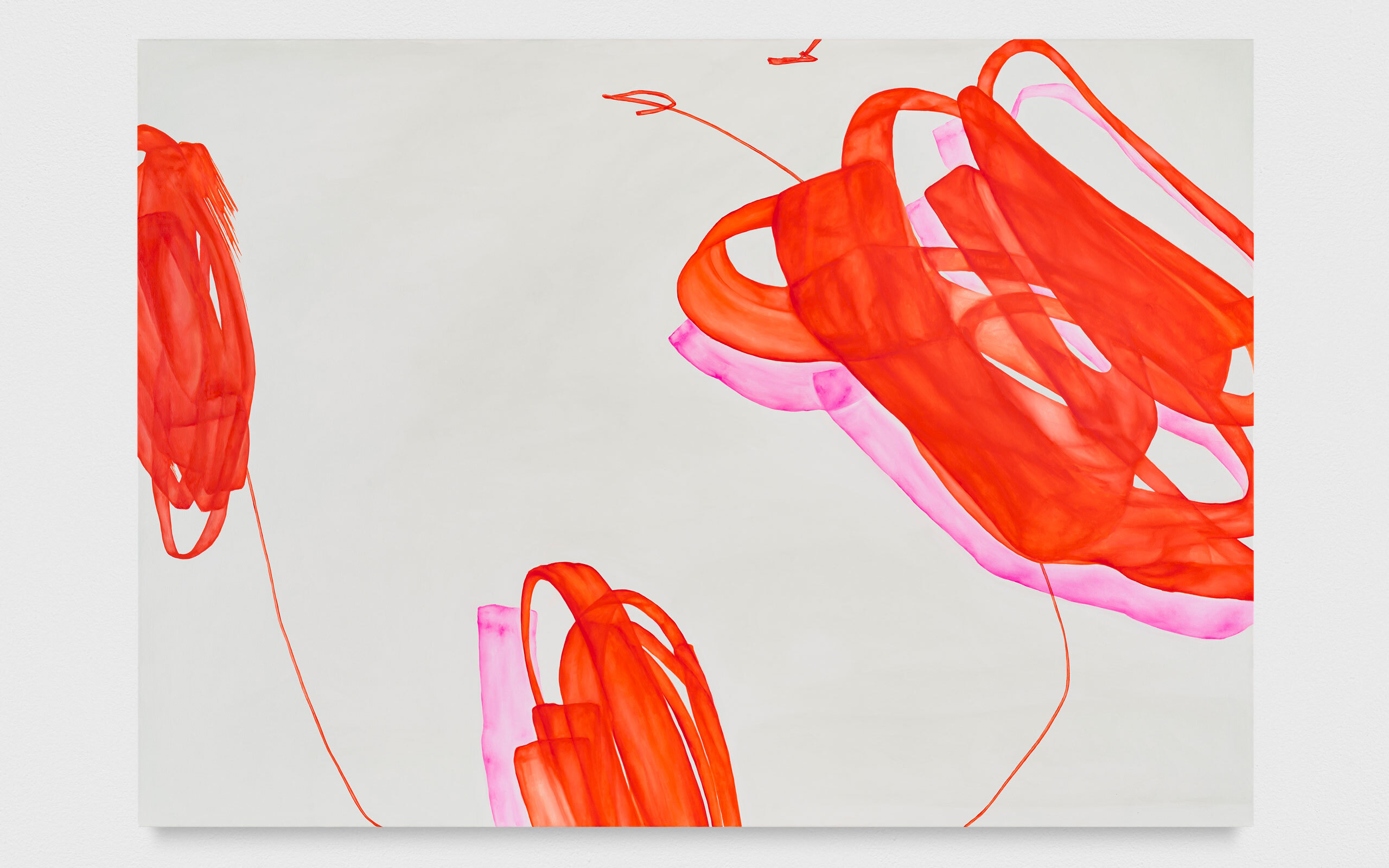
Riecht noch gut, 120 x 170 cm, oil on canvas, 2021, Photo: Trevor Good
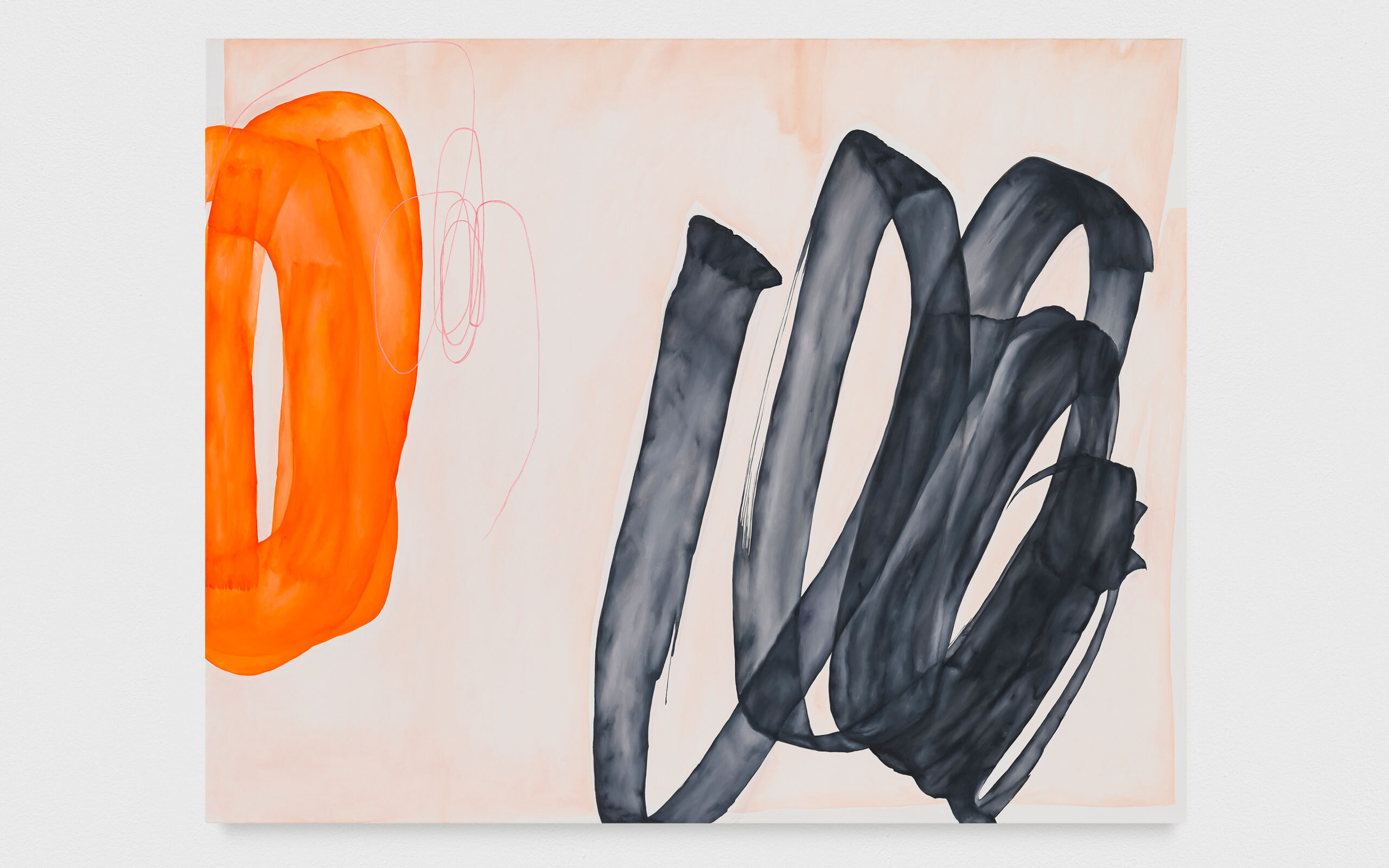
Not titled yet, 120 x 150 cm, oil on canvas, 2021, Photo: Trevor Good
Interview: Kevin Hanscke
Photos: Nora Heinisch


